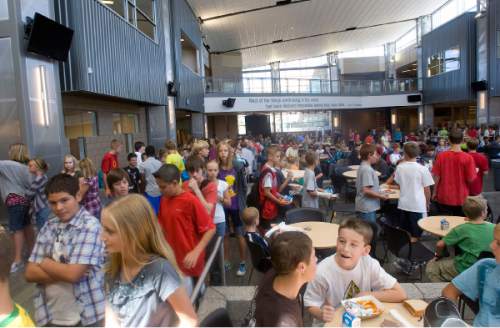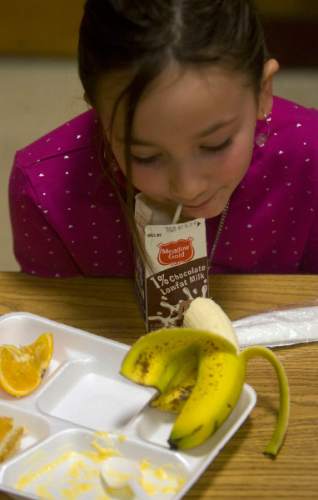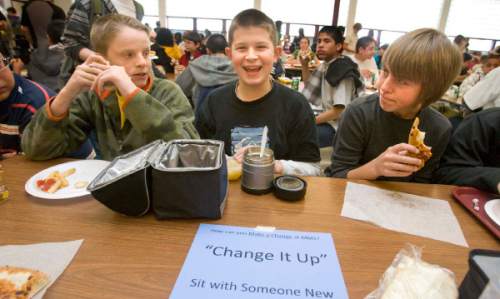This is an archived article that was published on sltrib.com in 2015, and information in the article may be outdated. It is provided only for personal research purposes and may not be reprinted.
Federal school lunch guidelines once counted pizza sauce as a vegetable to make it look like American kids were eating their leafy greens.
But it turns out the secret to healthy eating in school cafeterias may have less to do with legislation than it does with scheduling, according to a new study by Brigham Young University associate professor Joseph Price.
By serving lunch after recess, rather than before, researchers found that 45 percent more elementary students ate at least one serving of fruits and vegetables, and total fruit and vegetable consumption increased by 50 percent.
"Recess is a pretty big deal to kids," Price said, "so if you make them choose between recess and vegetables, recess is going to win."
The study, which was co-authored by Cornell University professor David Just, focused on seven elementary school cafeterias in Orem during the spring and fall of 2011.
Researchers documented the amount of fruits and vegetables being thrown away by students at those schools, Price said, then repeated the observation in the fall, when three of the seven schools switched to a recess-first schedule.
Price said that when lunch comes first, students skip portions of their meal to get outside to the playground more quickly. At the same time, he said, serving lunch after recess means kids work up an appetite and are more willing to clean their plates.
"Not only do kids eat more vegetables, but they throw less away," he said. "For a school trying to serve good fruits and vegetables, it's encouraging to know you can get more in the tummy and less in the trash."
Schools in Utah and around the country have complained of increased food waste after new healthy lunch guidelines were mandated in 2010. The Healthy, Hunger-Free Kids Act set caps on calorie counts and portion sizes while requiring whole grains and an increase in healthy food options.
"When it first came out, it was pretty dramatic — the food waste that we saw," Cherry Hill Elementary Principal Alisa Hart said of the new guidelines. "You can have the most healthy lunch menu out there, but if kids don't want to eat it, it doesn't matter."
Cherry Hill was among the schools that participated in the BYU study, Hart said, but has continued to serve lunch before excusing students for recess.
Hart said the school tried reversing the order of lunch and recess more than a decade ago, but the experiment led to scheduling headaches and was abandoned. Cherry Hill lunchroom managers didn't see a big difference in food waste at the time and it was difficult to get students to come in off the playground for lunch.
"When you're sending groups of kids out and then bringing them in to eat, it's just a little bit more difficult to schedule," she said.
Suncrest Elementary is in its third year of dividing students into grades that eat before recess and grades that eat after recess.
Principal Tommy Freeman said it can be a little difficult rounding students up to eat after recess, but the scheduling allows him to maximize his lunchroom and playground space.
"I have my playground supervisors kind of herd them and get them going," he said.
Hart said school nutrition is a significant concern that impacts learning and overall health. Many of her students live in poverty, she said, and get the bulk of their daily meals at school through breakfast and lunch programs.
If reversing the lunch order resulted in better diets for children, it would be worth addressing the organizational hurdles and making that change, she said.
"If there really is a way that we can flip-flop that around and get them to eat more, I'm very interested in that," she said.
Price said his study didn't look at the administrative concerns associated with changing the lunch order. But if educators and policymakers wanted to target childhood obesity and diet, he said, flipping lunch and recess would be a relatively low-cost strategy.
"Kids are already going to recess. They're already eating lunch," Price said. "You just flip the order."
The researcher also said the study could have applications at home. He suggested that if parents set aside a time to sit down and eat, rather than allowing their children to quickly finish their food and go play, those same healthy trends might be replicated at the dinner table.
"If you think about kids having to make a choice between veggies and video games, this is another case where video games will win," he said.









